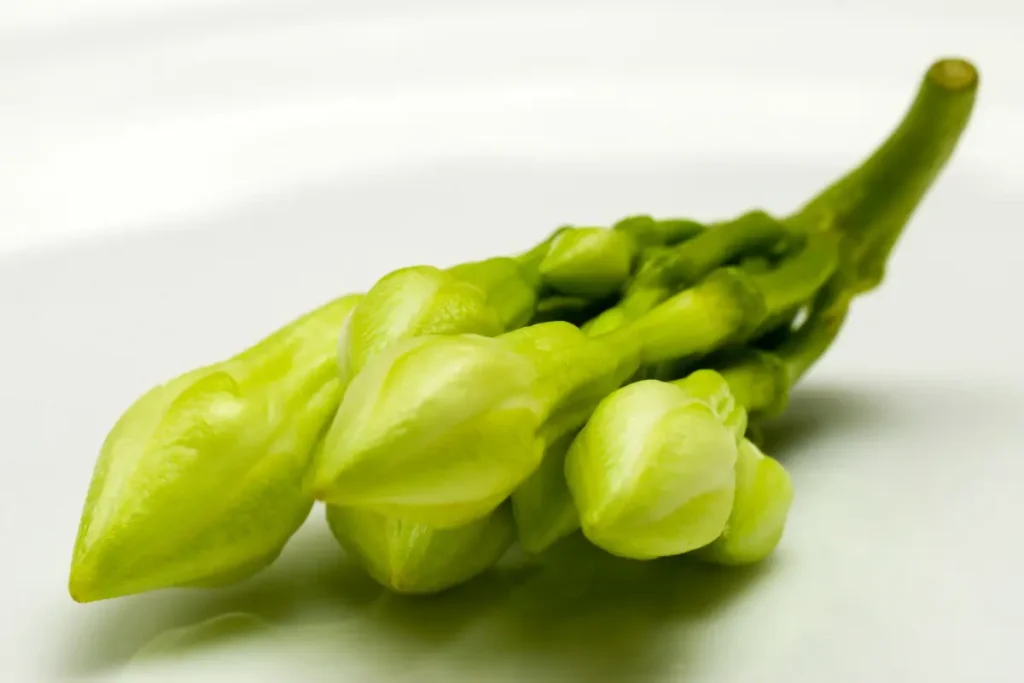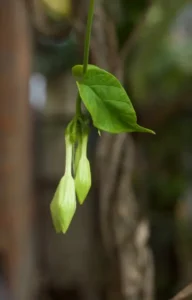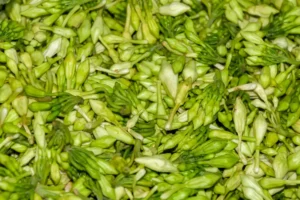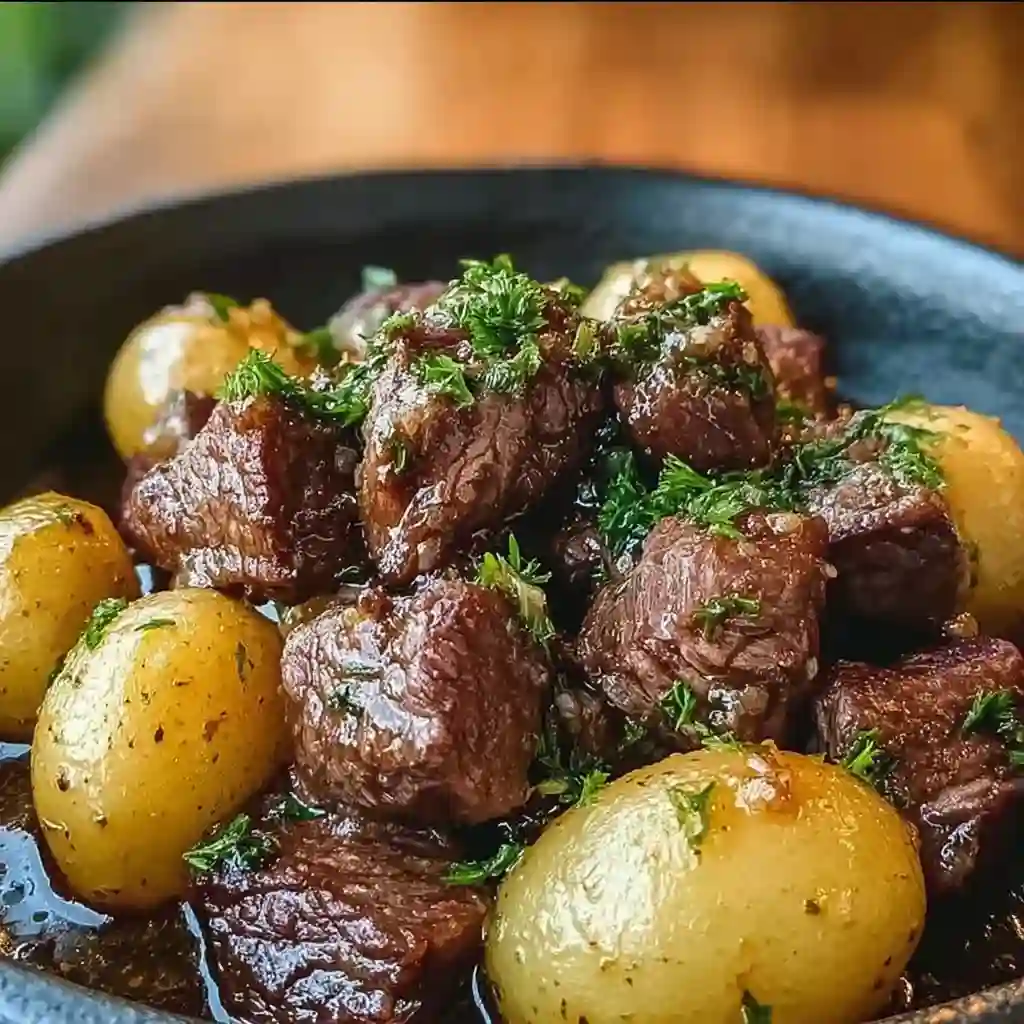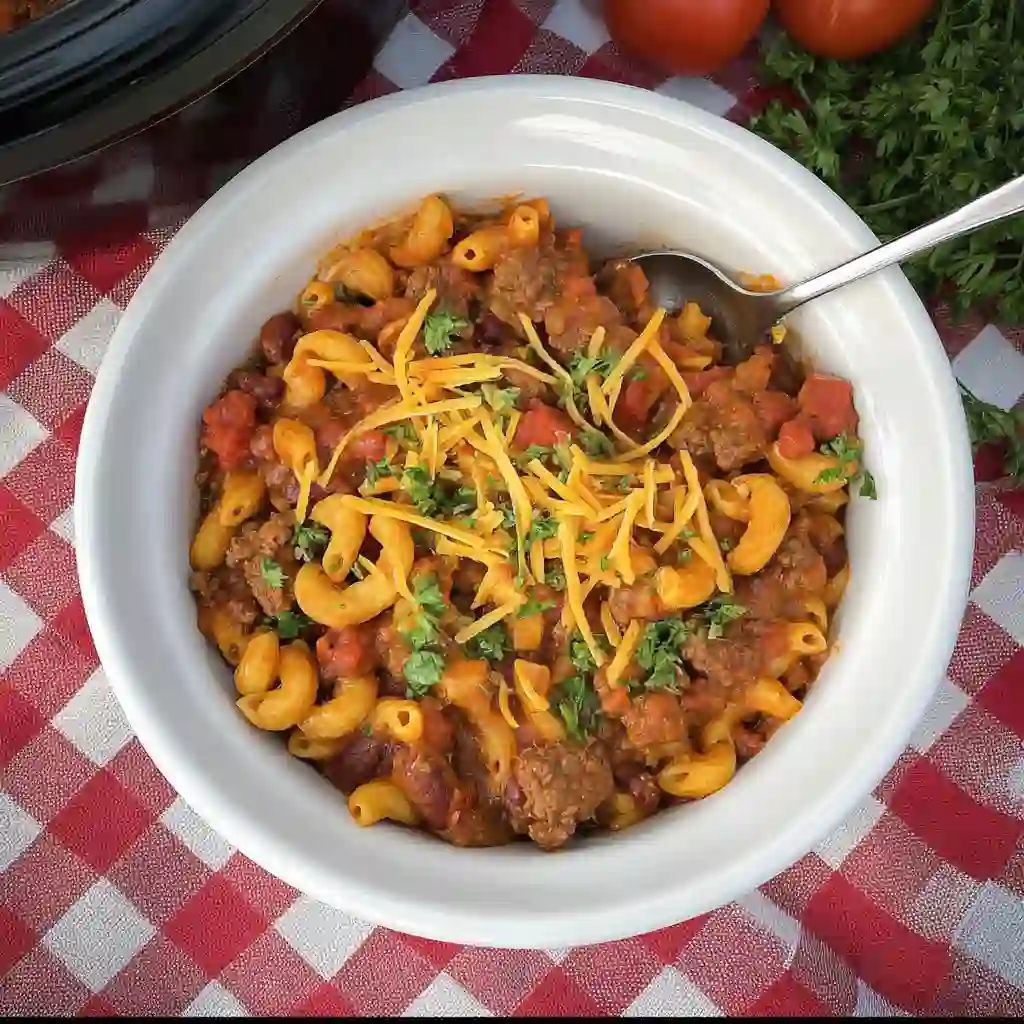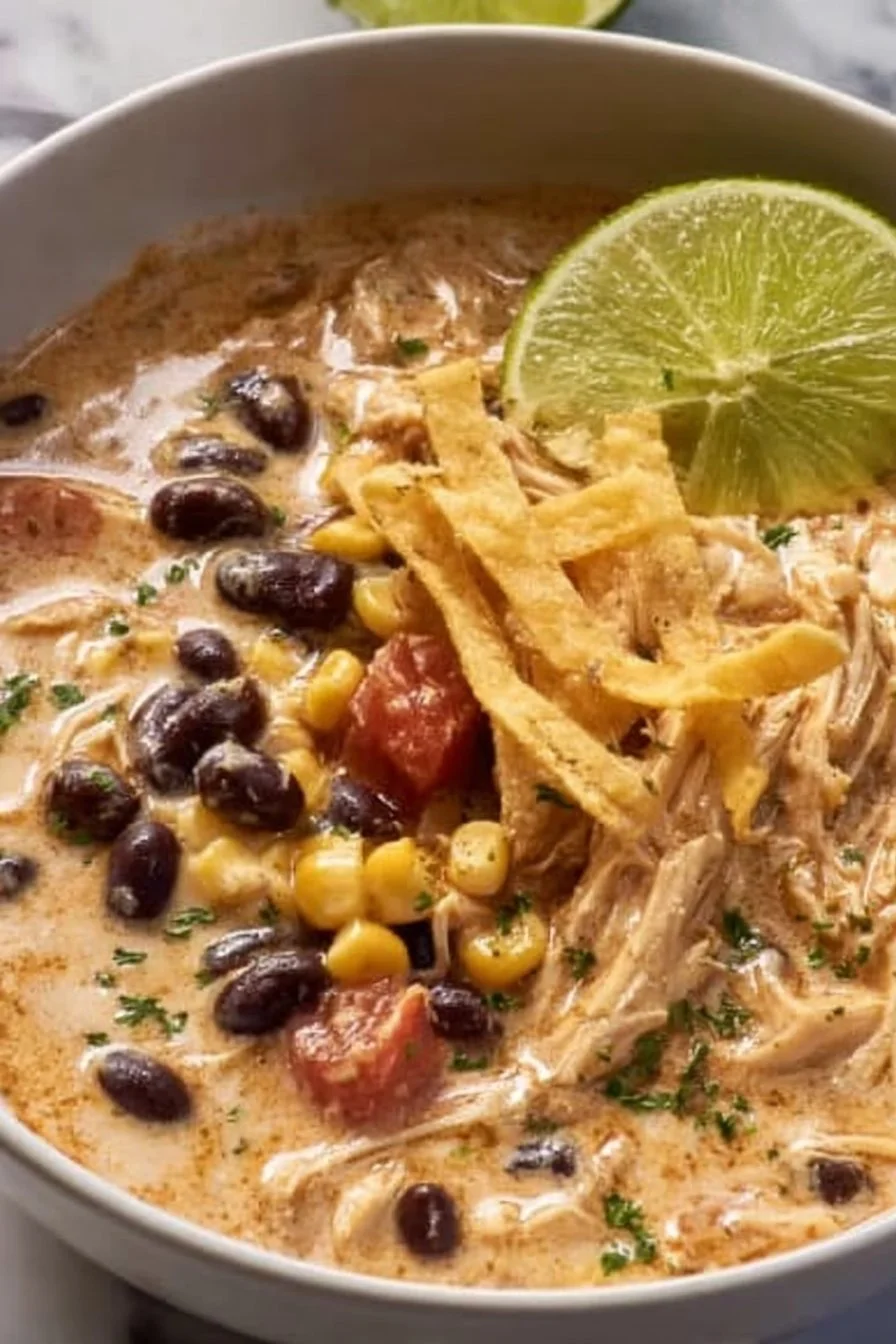If you’re curious about the taste of loroco, the edible flower that adds a touch of elegance to Central American cuisine, you’re in for a treat. Loroco has a flavor profile that is as distinct as its beautiful appearance. Join us as we dive into the world of loroco and discover its unique taste and culinary possibilities.
Key Takeaways:
- Loroco has a delicate, floral taste with a hint of herbaceousness.
- The flavor of loroco is often compared to a combination of squash blossoms and asparagus.
- Central American cuisine often incorporates loroco in traditional dishes like pupusas, soups, and tamales.
- When cooking with loroco, handle the flowers with care and add them towards the end to preserve their flavor.
- If loroco is not available, you can experiment with substitutes like squash blossoms or other edible flowers.
Loroco Taste Profile: A Delicate and Floral Experience
Loroco, an edible flowerr, offers a taste that is truly unique. Its delicate and floral flavor profile creates a culinary experience unlike any other. Many describe loroco’s taste as slightly herbaceous, similar to a blend of squash blossoms and asparagus with a hint of sweetness. Its distinctive flavor, along with its pleasant aroma, actively enhances the overall sensory experience.
When exploring the world of gastronomy, it’s essential to understand the distinct flavors that ingredients bring to the table. In the case of loroco, its delicate and floral notes add depth and complexity to a wide range of dishes, making it a prized ingredient in Central American cuisine.
With its unique taste, loroco stands out among other edible flowers. Its flavor comparison to squash blossoms and asparagus offers an intriguing blend of earthiness and vibrant freshness. The touch of sweetness further enhances its overall appeal, making it a versatile ingredient that can elevate both savory and sweet dishes.
Whether used as a main ingredient or as a garnish, loroco’s taste adds a special touch to dishes, making them stand out and tantalize the taste buds. Its ability to enhance the flavors of various ingredients and create a harmonious balance is truly remarkable.
Add a touch of loroco to your culinary creations and embark on a gastronomic adventure. Discover the delicate and floral experience that this edible flower brings to the table, and unleash your creativity in the kitchen.
Culinary Uses of Loroco: Adding a Touch of Flavor to Your Dishes
Loroco, a cherished ingredient in traditional Central American cuisine, has been delighting taste buds for centuries. This edible flower is known for its versatile applications and ability to elevate a wide range of dishes. Let’s explore some of the culinary uses of loroco and discover the flavorful charm it brings to your recipes.
Adding Loroco to Traditional Dishes
One of the most popular ways to incorporate loroco into your cooking is by using it in traditional dishes. From pupusas, which are stuffed corn tortillas, to hearty soups, stews, and tamales, loroco adds a unique twist to these beloved recipes. Its floral notes infuse the dishes with a distinct and vibrant taste that is sure to impress your palate.
“The infusion of loroco in traditional Central American dishes creates a harmonious blend of flavors that showcases the richness of our culinary heritage.” – Chef Maria Hernandez
Creating New Loroco-Inspired Recipes
Aside from traditional dishes, loroco also offers endless possibilities for creating new and innovative recipes. Its delicate and floral flavor pairs well with a variety of ingredients, opening up a world of culinary experimentation. Whether you’re adding loroco to salads, rice dishes, or even desserts, it promises to bring a touch of elegance and sophistication to your creations.
Recipe Ideas with Loroco
If you’re looking for some inspiration, here are a few loroco recipe ideas to get you started:
- Loroco and Cheese Stuffed Pupusas
- Loroco Soup with Corn and Chicken
- Vegetable Stir-Fry with Loroco
- Loroco Rice Salad with Citrus Dressing
- Loroco Flan with Caramel Sauce
Embracing the Loroco Flavor in Traditional Cuisine
Loroco is vital in Central American cuisine, offering authentic flavors from El Salvador, Guatemala, and Honduras. Using loroco in dishes honors the region’s rich food culture.
So why not embark on a culinary adventure and discover the wonders of loroco in your cooking? Whether you’re preparing a traditional recipe or experimenting with new flavors, loroco’s delicate and floral taste is sure to leave a lasting impression. Get creative, have fun, and let loroco add a touch of flavor to your dishes.
Exploring Loroco Flavors: Tips and Pairings
When cooking with loroco, it is important to handle the flowers with care to preserve their delicate flavor. Here are some loroco cooking tips to enhance your culinary experience:
- Use fresh loroco flowers: For the best flavor, always opt for fresh loroco flowers. Look for buds that are vibrant in color and free from any wilting or browning.
- Add loroco towards the end of cooking: To retain the authentic loroco taste, incorporate the flowers towards the end of your cooking process. This ensures that the delicate flavors are preserved and gives your dish a burst of freshness.
- Explore loroco substitute options: If loroco is not available, you can try substituting it with other edible flowers or vegetables that offer a similar flavor profile. Some alternatives to consider are squash blossoms or asparagus.
When it comes to loroco food pairing suggestions, the floral notes of loroco can be beautifully complemented by a variety of ingredients. Consider incorporating these flavors into your loroco dishes:
- Mild cheeses: The creamy and subtle flavors of mild cheeses like mozzarella or queso fresco can enhance the delicate taste of loroco.
- Corn: The sweetness and texture of corn pairs wonderfully with the floral notes of loroco, creating a harmonious blend of flavors.
- Beans: Whether it’s black beans or pinto beans, the earthy flavors of legumes can provide a delicious contrast to the floral profile of loroco.
- Fresh herbs: Basil, cilantro, or parsley can add a burst of freshness that complements the authentic loroco taste and enhances the overall dish.
Don’t be afraid to get creative and experiment with different ingredients to discover unique loroco dish flavors. The authentic taste of loroco can elevate both savory and sweet dishes alike, offering a truly extraordinary culinary experience.
Conclusion
Loroco, with its delicate and floral taste, is truly a culinary gem that can elevate your dishes to new heights. Whether you’re exploring the traditional flavors of Central American cuisine or looking to add a unique twist to your recipes, incorporating loroco will undoubtedly impress your taste buds and those of your guests.
With its distinct flavor profile, loroco significantly enhances the depth and complexity of a variety of dishes. Moreover, its unique combination of floral, herbaceous, and slightly sweet notes provides a sensory experience reminiscent of squash blossoms and asparagus.
Furthermore, this edible flower’s enchanting aroma adds an extra delight to your dishes, making it essential for creative cooking.
Central American cuisine celebrates the flavors of loroco, a key ingredient in traditional dishes like pupusas, soups, stews, and tamales. When you incorporate loroco into your cooking, you embrace the rich culinary heritage of the region and add a unique twist to your recipes.
Embark on a tasteful adventure with loroco and explore its wonders in your cooking. Experiment with different recipes and find the perfect combination of ingredients that complement its floral notes. Whether you’re a seasoned chef or a culinary enthusiast, loroco will undoubtedly become a cherished ingredient in your kitchen, adding a touch of elegance and sophistication to your dishes.
FAQ
What does a loroco taste like?
Loroco has a distinctive taste that can be described as delicate, floral, and slightly herbaceous. It is often compared to a combination of squash blossoms and asparagus, with a hint of sweetness.
What is the culinary use of loroco?
Traditional Central American cuisine commonly features loroco, appearing in dishes like pupusas (stuffed corn tortillas), soups, stews, and tamales. Cooks use the flower buds of loroco, incorporating them into recipes to infuse dishes with their unique flavor.
Are there any substitutes for loroco?
If loroco is not available, you can try substituting it with squash blossoms or other edible flowers. While it may not have the exact same flavor, it can still add a similar floral note to your dish.
How should I cook with loroco?
When cooking with loroco, it is best to handle the flowers with care to preserve their delicate flavor. Use fresh loroco flowers for the best taste and add them towards the end of cooking to retain their unique flavors.
What are some food pairings that go well with loroco?
Loroco pairs well with ingredients such as mild cheeses, corn, beans, and fresh herbs. The floral notes of loroco can add a vibrant and refreshing taste to your dishes. Feel free to experiment with different flavor combinations to create unique and delicious recipes.
What is loroco similar to?
Loroco has a unique flavor that is somewhat difficult to compare directly with other foods. However, some people describe its taste as a mix between chayote and artichoke, with a hint of nuttiness and a floral aroma. It’s important to note that the taste of loroco is distinct, and while these comparisons may provide a rough idea, they don’t fully capture the uniqueness of loroco’s flavor.
What is loroco in pupusas?
“In pupusas, chefs use loroco as a flavorful filling ingredient. These traditional Salvadoran dishes consist of thick corn tortillas stuffed with various fillings. Chefs often mix loroco with cheese (quesillo or mozzarella) to create a savory and aromatic filling. The floral and slightly herbaceous flavor of loroco pairs wonderfully with creamy cheese, offering a unique taste to the pupusas that Salvadoran cuisine highly cherishes.

